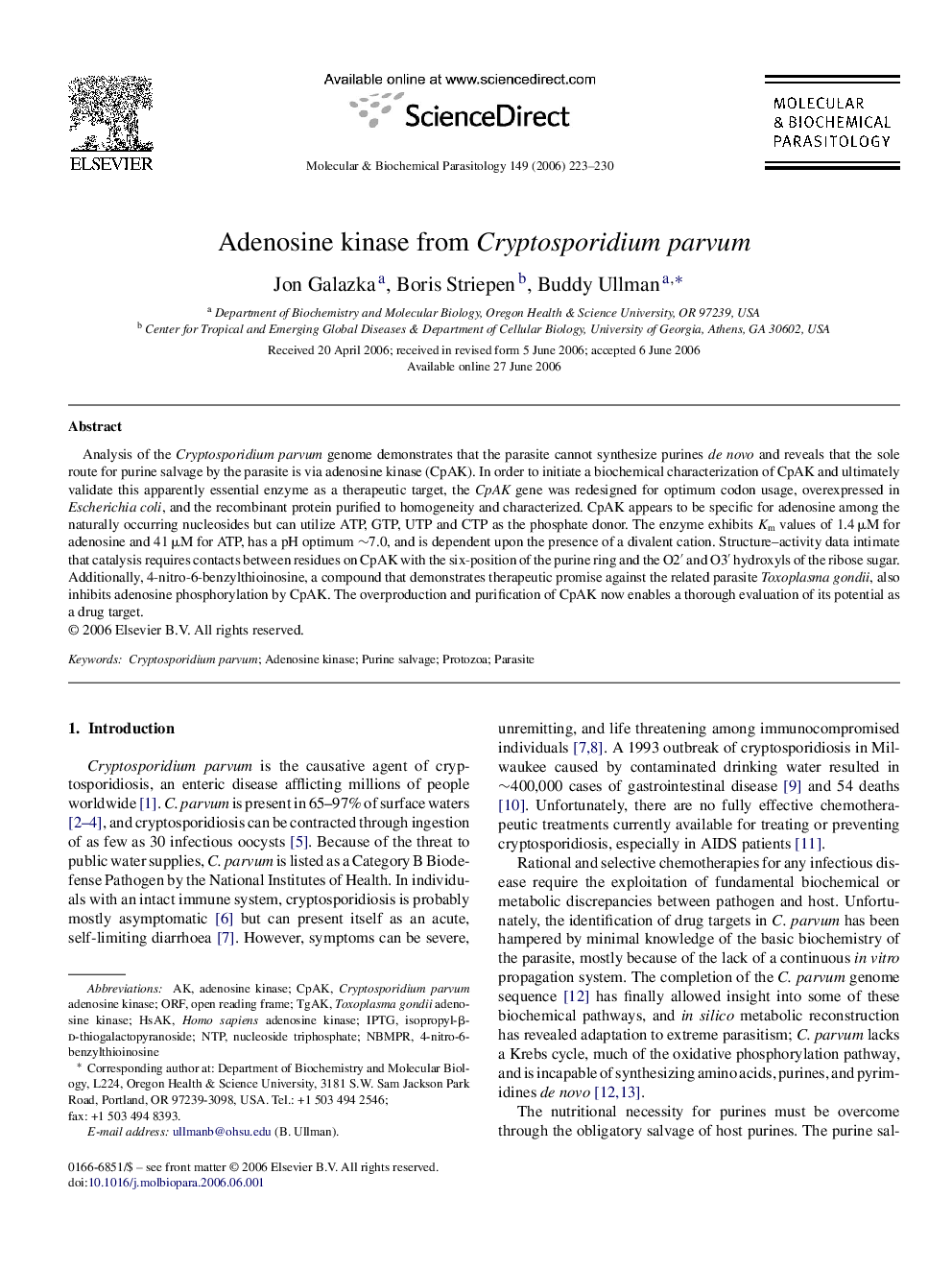| Article ID | Journal | Published Year | Pages | File Type |
|---|---|---|---|---|
| 2830348 | Molecular and Biochemical Parasitology | 2006 | 8 Pages |
Abstract
Analysis of the Cryptosporidium parvum genome demonstrates that the parasite cannot synthesize purines de novo and reveals that the sole route for purine salvage by the parasite is via adenosine kinase (CpAK). In order to initiate a biochemical characterization of CpAK and ultimately validate this apparently essential enzyme as a therapeutic target, the CpAK gene was redesigned for optimum codon usage, overexpressed in Escherichia coli, and the recombinant protein purified to homogeneity and characterized. CpAK appears to be specific for adenosine among the naturally occurring nucleosides but can utilize ATP, GTP, UTP and CTP as the phosphate donor. The enzyme exhibits Km values of 1.4 μM for adenosine and 41 μM for ATP, has a pH optimum â¼7.0, and is dependent upon the presence of a divalent cation. Structure-activity data intimate that catalysis requires contacts between residues on CpAK with the six-position of the purine ring and the O2â² and O3â² hydroxyls of the ribose sugar. Additionally, 4-nitro-6-benzylthioinosine, a compound that demonstrates therapeutic promise against the related parasite Toxoplasma gondii, also inhibits adenosine phosphorylation by CpAK. The overproduction and purification of CpAK now enables a thorough evaluation of its potential as a drug target.
Keywords
Related Topics
Life Sciences
Biochemistry, Genetics and Molecular Biology
Molecular Biology
Authors
Jon Galazka, Boris Striepen, Buddy Ullman,
